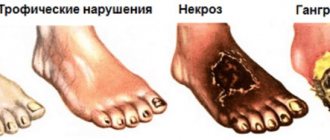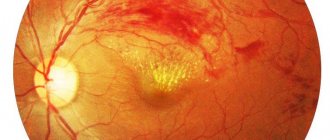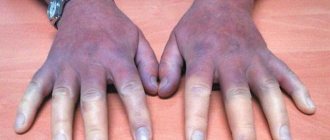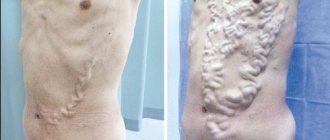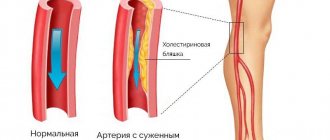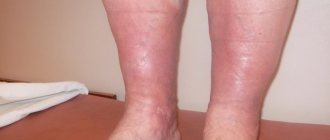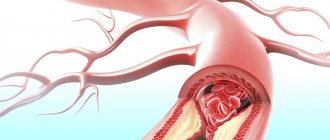What is Buerger's disease?
Buerger's disease (thromboangiitis obliterans) is a rare disease that in most cases affects young and middle-aged men who smoke cigarettes. Thromboangiitis obliterans is characterized by narrowing or blockage (occlusion) of the veins and arteries of the extremities, resulting in decreased blood flow to these areas (peripheral vascular disease). The legs are more often affected than the arms.
In most cases, the first symptom is severe pain in the lower arms and legs at rest. Affected people experience leg cramps when walking, which in rare cases can cause lameness. Additionally, affected people may have sores (ulcers) on the extremities, numbness and tingling, and a lack of normal blood flow to the fingers and/or toes when exposed to cold temperatures (Raynaud's syndrome), and/or inflammation and blockage of certain veins (thrombophlebitis ).
In severe cases, people with thromboangiitis obliterans experience tissue death (gangrene) in the affected limbs. The exact cause of Buerger's disease is not known; however, the majority of patients are young and adult male smokers.
Treatment Options
Sometimes medication is enough for the patient!
By seeking medical help in the early stages, you can count on improved health as a result of drug therapy. It is always comprehensive and aims to:
- eliminate the factors that caused the disease or the provoking circumstance. For example, you need to completely stop smoking. Replacement therapy with nicotine patches is prohibited, as their use maintains the disease;
- restore healthy vascular tone;
- relieve pain;
- establish metabolism in affected organs and tissues;
- normalize biochemical processes that regulate blood clotting.
For this purpose drugs are prescribed:
- dilating vessels;
- preventing the pathological formation of blood clots;
- relieving pain and inflammation;
- restoring healthy immunity;
- eliminating swelling and destroying pathological microflora.
The doctor decides which medications to choose, for how long and in what dosage to take them in each specific case. The list of drugs and the treatment regimen will depend on many parameters, including the severity of the lesion, the list of concomitant pathologies, and the tendency to allergic reactions.
Local treatment
It includes antiseptic treatment of skin areas with signs of necrosis. If infected, abscesses are drained. The affected surface is not treated with antibiotics. They are prescribed intravenously or by injection.
Physiotherapy and spa treatment
Recovery through physiotherapy is recommended only during periods of remission. For this purpose, use:
- magnetic therapy;
- iontophoresis with enzyme drugs;
- inductothermy;
- diodynamic Bernard currents;
- laser therapy.
To improve the general condition of patients with obliterating pathologies of the hands and feet, radon and hydrogen sulfide baths are recommended. Like electrical procedures, they are contraindicated during periods of exacerbation.
Surgical methods
A number of surgical procedures can be used to restore blood supply
When drug therapy does not produce the desired effect, radical treatment methods are considered:
- endarterectomy - removal of the damaged area of the vessel (up to 15 cm);
- bypass - the formation of a bypass capillary, which allows maintaining normal blood circulation;
- stenting. A metal mini-structure is installed in the affected vein to prevent narrowing of the lumen;
- prosthetics involving the use of analogues made of synthetic materials.
With extensive and deep gangrene, partial or complete (depending on the degree of damage) amputation of the limb is indicated. This method is used in severe cases, when it is the only way to save the patient’s life.
Signs and symptoms
Buerger's disease is characterized by narrowing or blockage (occlusion) of intermediate and/or small arteries and veins of the extremities, resulting in decreased blood flow to these areas (peripheral vascular disease). The disease tends to occur suddenly (acutely), lasting 1-4 weeks. The disorder has a relapsing course.
In most cases, the first sign of Buerger's disease is severe pain in the lower arms and/or legs at rest. Affected people may also experience leg cramps when walking, which in rare cases can lead to lameness.
Other physical signs associated with Buerger's disease may include:
- sores (ulcers) on the arms and legs;
- pale hands;
- numbness and tingling and lack of normal blood flow in the fingers and toes when exposed to cold temperatures (Raynaud's syndrome);
- inflammation and blockage of certain veins (thrombophlebitis).
The dry, dark sores that often form on the tips of the fingers or toes can be extremely painful. The pain associated with these ulcers may increase with elevation. In severe cases, patients with the disease may experience tissue necrosis (gangrene) in the affected areas.
Diagnostics and research methods
Diagnosis of thromboangiitis obliterans is carried out by excluding other diseases (differential diagnosis) with similar symptoms. To do this, the patient needs to undergo the following tests and studies:
- Blood and urine tests : general, liver enzymes, glucose, C-reactive protein, antinuclear antibodies, rheumatoid factor.
- Functional tests:
- identification of Oppel's plantar ischemia symptom. When the diseased limb is raised upward, the foot begins to turn pale;
- Goldflam's test. The patient lies on his back and performs as many full flexions and extensions of the legs at the knees and hip joints as possible. If there is a violation, then fatigue sets in after 10-20 repetitions;
- Panchenko's knee phenomenon. To do this, you need to sit down and cross your legs. If there is a disorder of blood flow, then in the foot of the leg on top, after a short period of time, numbness, “goosebumps”, pain in the calf appear;
- Shamova's test. The leg must be freed from clothing and raised up. A cuff is placed on the thigh, where air is pumped to the limit. When pressure above systolic arterial pressure appears on the leg, it is placed in a horizontal position. The cuff remains on for 4-5 minutes, then is quickly removed. After 30 seconds, the backs of your fingers should turn red. If this does not happen after 1-1.5 minutes, then there is mild circulatory failure. If after 1.5-3 minutes, then a moderate degree is diagnosed, and more than 3 minutes - significant.
- Doppler ultrasound diagnostics is a study that determines changes in microcirculation in the small arteries of the upper and lower extremities during thromboangiitis.
- Angiography is a method of contrast study of blood vessels using an X-ray machine, which reveals segmental lesions of the arteries.
- Ultrasound angioscanning , with the help of which the vessels of the legs and arms are examined for their lesions and circulatory difficulties.
In addition, the patient is prescribed other tests and studies designed to exclude the presence of sources of embolism (including the risk of pulmonary thromboembolism), obliterating atherosclerosis (about it here) and autoimmune diseases.
Causes and risk factors
The exact cause of Buerger's disease is unknown. However, the main factor causing the disorder is tobacco smoking.
In fact, most scientists suggest that past or current use of tobacco products is a requirement for a diagnosis of Buerger's disease. The exact connection that exists between tobacco products and Buerger's disease is not fully understood.
Some scientists suggest that Buerger's disease may be an autoimmune disease. In some cases, injuries to the arms and legs contribute to the disorder. Autoimmune disorders occur when the body's natural defenses against "foreign" or invading organisms (such as antibodies), i.e. the immune system begins to attack healthy tissue for unknown reasons.
There is a role for genetic factors in the development and severity of the disease, as the prevalence varies significantly between ethnic groups. More research is needed to determine the exact role that genetics plays in the development of the disease.
Symptoms of Buerger's disease develop due to poor circulation (ischemia) in certain areas of the body, most often the arms and legs.
Lifestyle and diet
1. Switch to a low-salt diet. This will help keep your blood pressure under control, and the pressure, in turn, will not damage the kidney cells. This diet will help minimize fluid retention and eliminate swelling.
2. Eat less protein. A diet low in protein and cholesterol helps slow the progression of Berger's disease and protects the kidneys.
3. Monitor your blood pressure at home. You need to measure your blood pressure daily, record the results in a diary and show them to your doctor so that he can evaluate the effectiveness of the treatment.
Affected Populations
Buerger's disease is a very rare disease, most cases affecting young or middle-aged smokers with the onset of symptoms before the age of 40-45 years. In recent years, more women have been reported in the medical literature. Some scientists suggest that this is due to an increase in the number of women smoking. While the ratio of affected men to women was once 100:1, recent articles in the medical literature suggest that the ratio may be 10:1 or more. In very rare cases, the disease has been observed in non-smokers.
Buerger's disease is extremely rare in Europe, but is more common in other parts of the world, especially parts of Asia and the Far and Middle East. The estimated incidence ranges from 12.6 to 20 per 100,000 people in the general population. The disease is more common in countries with heavy tobacco use.
What provokes the development of this disease?
The average age of Buerger's disease is over forty years. Men get it more often than women.
The exact cause of the pathology is not clear, but it is noted that almost all patients in whom it was detected are heavy smokers.
Alcoholics often experience thromboangiitis of the lower extremities, when the disease affects only the legs.
Other factors influencing the possible occurrence of thromboangiitis:
- Genetic predisposition to the disease.
- Limb injuries associated with frostbite and frequent hypothermia of the extremities.
- Autoimmune aggression of the body.
- Intoxication.
- Infectious inflammations.
- Vascular spasms caused by increased production of hormones.
Diagnostics
The diagnosis of Buerger's disease is made by identifying characteristic physical signs and symptoms. Many doctors require a history of recent or current tobacco use when diagnosing Buerger's disease. To confirm the diagnosis, tests such as angiography or non-invasive methods are performed. During angiography, an injection of a specialized dye is used to make the blood vessels visible in the X-ray.
Thromboangiitis obliterans can be mimicked by a number of other diseases that cause decreased blood flow to the extremities. These other disorders must be ruled out through aggressive evaluation because their treatment differs significantly from that of Buerger's disease.
Treatment methods
It is very difficult to completely cure this pathology.
Conservative treatment
- To relieve the inflammatory autoimmune process, corticosteroids are prescribed, most often Prednisolone.
- To dilate small arteries, improve blood circulation and prevent the formation of blood clots, Vazaprostan and Iloprost are used.
- They can also send the patient for plasmapheresis, hemosorption - blood purification procedures.
- Sometimes perfluorocarbons are administered: Perftoran, Oxyferol. These emulsions serve as a kind of “blood substitutes”, as they are capable of transporting oxygen.
- A prerequisite is to quit smoking. If the patient does not quit the bad habit, the effectiveness of treatment decreases sharply.
Surgery
For thromboangiitis obliterans, the following operations are effective:
- Lumbar sympathectomy. With its help, nerve fibers that send impulses to the vessels of the legs are neutralized, causing them to contract. The operation helps to dilate the vessels of the lower extremities and improve blood circulation in them.
- Thoracic sympathectomy. It is performed according to the same principle, only on other nerves. Normalizes blood circulation in the hands.
If the patient develops gangrene, amputation of the limb is most often required.
Operation sympathectomy
Disorders with similar symptoms
Symptoms of the following disorders may be similar to those of Buerger's disease. Comparisons can be useful for differential diagnosis:
- Vasculitis is inflammation of blood vessels. In people with vasculitis, inflammation damages the lining of affected blood vessels, causing narrowing, blood clots (thrombosis), and/or blockage. As a result, the blood supply of oxygen to certain tissues may be limited (ischemia), which can lead to pain, tissue damage, and in some cases, failure of some affected organs. Vasculitis affects veins and arteries of any type or size; may affect one or more organs and tissues of the body; and be a primary (independent) disease or arise from or in connection with a number of different underlying disorders. Consequently, the range and severity of symptoms and signs associated with vasculitis varies greatly. The specific cause of vasculitis is not fully understood. However, it is believed that in most cases the disease is associated with disorders of the body's immune system.
- Scleroderma is a rare connective tissue disease characterized by abnormal thickening of the skin. Connective tissue is made up of collagen, which supports and connects other tissues in the body. There are several types of scleroderma. Some types affect specific parts of the body, while other types affect the entire body and internal organs (systemic). The exact cause of scleroderma is unknown. The immune system and vascular system, as well as connective tissue metabolism, are known to play a role in the disease process.
- Takayasu arteritis is a rare disease characterized by inflammation of the large elastic arteries. The main artery of the heart and the pulmonary artery are affected. The disorder causes progressive inflammation of many arteries in the body (polyarteritis), resulting in decreased blood flow. Arteries in the head and arms may be affected, which can lead to loss of the body's major pulse points. Some people with this arteritis have irregular narrowing of parts of the large arteries (segmental stenosis) and abnormal backflow of blood from the aorta into the left ventricle of the heart (aortic regurgitation).
Definition of the disease and the causes of its development
Buerger's disease, or thromboangiitis obliterans, is a disease that manifests itself as chronic inflammation of blood vessels, mainly arteries, and their subsequent thrombosis .
As a result of inflammation, all three layers of the vascular wall are damaged, the lumen of the vessel is completely narrowed and the nutrition of the surrounding tissues is disrupted.
Initially, the vessels of the legs and feet are damaged, and as the disease progresses, large arteries are involved in the process: femoral, popliteal, iliac.
It is a male disease, with a male to female ratio of 99:1 . Pathology got its name from the name of the scientist who first described it in detail. In the literature you can find the double name Winivarter-Buerger disease. This is not a mistake; the German researcher Winivarter was the first to describe the disease.
Among the reasons contributing to the development of the disease are:
- mechanical injuries;
- systemic diseases of an autoimmune nature;
- nicotine addiction;
- frequent hypothermia;
- frostbite of the extremities;
- increased vascular tone;
- lack of vitamins in the body;
- infectious diseases;
- elevated blood lipid levels;
- hereditary burden;
- diseases of the endocrine system.
Interesting! Many doctors consider nervous shock to be the cause of the disease. Chronic overstrain of the central nervous system leads to functional narrowing of the vessel and insufficient oxygen supply. Back in the 80s of the 20th century, psychological research was carried out and the personality types of people suffering from thromboangiitis were studied.
Classification
Depending on the localization of the pathological process, a classification of Buerger's disease has been developed. There are three types:
- Distal . Small-caliber vessels are affected. This type is the most common, accounting for up to 70% of total cases.
- Proximal . Large arteries are involved (femoral, brachial, knee). Occupies about 15-20%.
- Mixed . Large and small vessels are involved. It has the most unfavorable course; conservative treatment of this type is difficult.
Thrombangiitis is a disease characterized by a wave-like course. Periods of exacerbations are followed by remission. Depending on the activity of clinical symptoms, the disease can occur in mild, moderate and severe forms. There are 4 stages:
- ischemic , when there is only functional damage;
- trophic , in which tissue nutrition is disrupted;
- necrotic , essentially the death of surrounding tissues due to the complete lack of supply of nutrients and oxygen;
- gangrenous , the outcome of which is often limb amputation.
Important! Each of these stages has varying degrees of symptoms. The sooner the patient contacts the clinic for diagnosis and treatment, the higher the likelihood of not only saving the limb, but also the quality of life.
Treatment
Treatment of Buerger's disease is symptomatic and supportive. Symptoms usually improve if patients stop smoking. In some cases, when people quit smoking, complete remission of the disorder may occur.
Unless the affected person quits smoking, premature or unnecessary surgery should be avoided when treating Buerger's disease. Conservative treatment may include drugs that prevent blood clotting (anticoagulants), drugs that increase the diameter of blood vessels (vasodilators), drugs that prevent inflammation (anti-inflammatory drugs), antibiotics, and/or drugs that reduce pain (analgesics).
In some cases, surgery is necessary. Affected people undergo surgery to destroy nerve endings (ganglia), interrupting the nerve pathway and improving blood supply to the affected limb (sympathectomy). In some cases, surgeons may try bypass procedures to bypass blocked or narrow (occluded) veins and/or arteries. In severe cases, surgeons may be forced to remove (amputate) a finger or toe or part of an arm or leg.
Treatment of Berger's disease
There is no radical treatment for this disease.
There is also no way to know how the disease will progress in a particular patient. Some patients, for unknown reasons, achieve long-term remission and live normally, having insignificant levels of protein and red blood cells in the urine. But almost half of patients with Berger's disease develop end-stage renal failure.
Treatment of Berger's disease should be aimed at slowing the progression of renal failure and reducing the risk of complications associated with it.
For this purpose the following drugs are used:
1. Drugs that lower blood pressure. The use of ACE inhibitors (perindopril, ramipril) and AT-II receptor antagonists (losartan, valsartan) can lower blood pressure and reduce protein excretion in the urine.
2. Immunosuppressors (drugs that suppress the immune system). Corticosteroid hormones (methylprednisolone) and other drugs are used to protect the kidneys. These drugs have a number of serious side effects, so the doctor weighs all the risks before prescribing them.
3. Omega-3 fatty acids. These beneficial substances, which are found in fish oil and other foods, can suppress inflammation in the kidneys without causing serious side effects. Used as a food additive.
4. Mycophenolate mofetil. This is a new, very powerful immune suppressant drug. Used when other means are ineffective.
In severe cases, with kidney failure, patients undergo dialysis - cleansing the blood of toxins using a special device, bypassing the kidneys. In case of severe damage, a kidney transplant is recommended.
Prognosis and prevention
If you stop using tobacco products, the symptoms associated with thromboangiitis obliterans may simply go away without the need for treatment.
Thromboangiitis obliterans is not immediately fatal. Amputation is common, and major amputations are almost twice as common in patients who continue to smoke. The prognosis will improve markedly if the patient quits smoking. Female patients tend to have much longer life expectancies than male patients. The only known way to slow the progression of the disease is to abstain from all tobacco products.
Diagnostic methods
Since the general clinical picture of thromboangiitis is similar to other vascular diseases, diagnosis is carried out by exclusion. There are no exact methods for diagnosing thromboangiitis.
In addition to a general examination and questioning of the patient, the doctor prescribes tests and diagnostic procedures, such as:
- Biochemical blood tests.
- General urine tests.
- Angiography. X-ray examination using a contrast agent.
- Dopplerography. Ultrasound examination of blood flow.
- Biopsy of the affected area.
If arteries near internal organs are affected, the patient may be prescribed a study of their condition: ultrasound, CT, x-ray, and so on.
Also, during the examination, the doctor may ask the patient to perform several simple actions, for example, raise his leg up and hold it in this state for some time. If the skin begins to turn pale quickly, this is a sign of poor circulation.
Such tests are called tests; they make it possible to identify the fact of a blood flow disorder without special studies, but an accurate diagnosis is made only after a more complete examination of the patient.
Stages of the disease
Clinically, the following stages of Buerger's disease are distinguished:
- The first (initial) – a burning or tingling sensation appears in the lower extremities or arms (depending on the location of the lesion). Sometimes intermittent claudication occurs when walking long distances.
- The second is that the lameness intensifies. Atrophy of subcutaneous fat tissue begins (limbs lose weight). The nail plates thicken, the hair at the site of the lesion stops growing and may fall out.
- The third is constant pain, muscle atrophy. Swelling is observed, ulcers easily appear as a result of the smallest injuries.
- The fourth (terminal) is complete destruction and death of tissue. Without treatment, amputation is inevitable. Without cutting off the dead part of the limb, the process will spread further.
Buerger's disease stage of the disease


